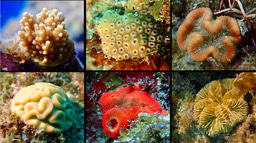Manipulating Light's Limits: New Discoveries in Light Barriers
Published in Physics
Explore the Research

Finite barrier bound state - Light: Science & Applications
Light: Science & Applications - Finite barrier bound state
The Genesis of Curiosity
In the world of physics, where light and matter intersect, our research started with a straightforward question: How can we confine and guide light within very thin material? This question led our team to explore photonic crystals that can manipulate the flow of light within them. Our research was not only just about controlling light but also offering new strategies for designing sensors and enhancing nonlinear optics, which pave the way for new technological advancements.
The Challenge: Rethinking Photonic Boundaries
Photonic crystals have long been an excellent platform for physicists seeking to manipulate light. These materials, known for their ability to create band gaps — regions where light cannot propagate — offer a unique opportunity to control light in impossible ways with natural materials. However, a significant challenge has always been the manipulation of boundary modes within these crystals. Conventional wisdom suggested that these modes were heavily influenced by the size of the crystal, making it challenging to reduce the size of systems.
Our research aimed to challenge this conventional wisdom. We hypothesized that even in thin photonic crystals, certain states of light could be completely confined, a theory contradicting established beliefs. This was not just an academic exercise, proving this could pave the way for new types of optical devices with unprecedented control over light.
The Innovating: A Leap into the Unknown
Diving into the research, we encountered our first obstacle: the prevailing assumption that boundary modes in photonic crystals required a vast number of lattice sites to achieve confinement. This notion suggests that inherent limitations bound miniaturization and high integration of photonic devices. Our ambition was to prove otherwise.
Our breakthrough came with conceptualizing finite barrier bound states, a radical idea inspired by the phenomenon of bound states in the continuum (BICs). We envisioned states of light so finely trapped within the thin bandgaps of photonic crystals that they defied the traditional understanding of wave localization. This was not just about proving a point but about opening a new realm of possibilities for light-matter interaction.
Embarking on this research required us to step into uncharted territory. We constructed a particular type of photonic crystal designed to test our hypothesis about boundary mode manipulation. Our setup focused on a photonic crystal with a specific symmetry intended to enable control over the transition of boundary modes. By carefully designing the crystal's geometry, we aimed to observe the phenomenon of mode coupling at the boundaries — a critical aspect of our hypothesis.
As the research progressed, our excitement grew. The results suggest boundary modes that could be manipulated in a previously thought impossible way. In thin photonic crystals, we observed states completely confined within the crystal, unable to "jump" from one side to the other, regardless of the crystal's size.
The real moment of revelation came when we removed one boundary of the photonic crystal, unveiling a new configuration that trapped the remaining boundary modes in what we termed Finite Barrier Enabled Bound States in the Continuum (FBICs). These FBICs, exhibiting non-radiating properties, were a testament to our hypothesis: light could be confined in unimaginable ways.
The Results: Breaking New Ground
The results of our experiments were nothing short of revolutionary. We showcased the precise manipulation of boundary modes within photonic crystals, revealing that such control is achievable even with remarkably thin crystal structures. This finding was not just a confirmation of our hypothesis, but a paradigm shift in understanding light behavior in structured materials.
Our research, while deeply rooted in theoretical physics and complex experimental setups, was driven by a vision of practical applications. The complete localization of boundary modes within just a few lattice sites opens up new avenues for developing highly integrated photonic devices, enhancing light-matter interactions, and advancing the field of nonlinear optics.
Reflections and Looking Forward
As we share our story, from the initial spark of curiosity to the breakthrough discoveries, our journey through the uncharted territories of photonics reflects a broader narrative of scientific exploration. It is a tale of challenging conventions, embracing the unknown, and expanding the boundaries of what is possible.
Our findings provide a new understanding of light and its interactions with photonic crystals and lay the groundwork for future innovations. The implications of our work extend beyond the confines of our laboratory, promising to inspire further research and development in fields ranging from sensor technology to light-matter interaction.
As we look to the future, we are excited about the new horizons our research has unveiled, confident that the journey of discovery is just beginning.
Follow the Topic
-
Light: Science & Applications

A peer-reviewed open access journal publishing highest-quality articles across the full spectrum of optics research. LSA promotes frontier research in all areas of optics and photonics, including basic, applied, scientific and engineering results.
Your space to connect: The Polarised light Hub
A new Communities’ space to connect, collaborate, and explore research on Light-Matter Interaction, Optics and Photonics, Quantum Imaging and Sensing, Microscopy, and Spectroscopy!
Continue reading announcement


Please sign in or register for FREE
If you are a registered user on Research Communities by Springer Nature, please sign in